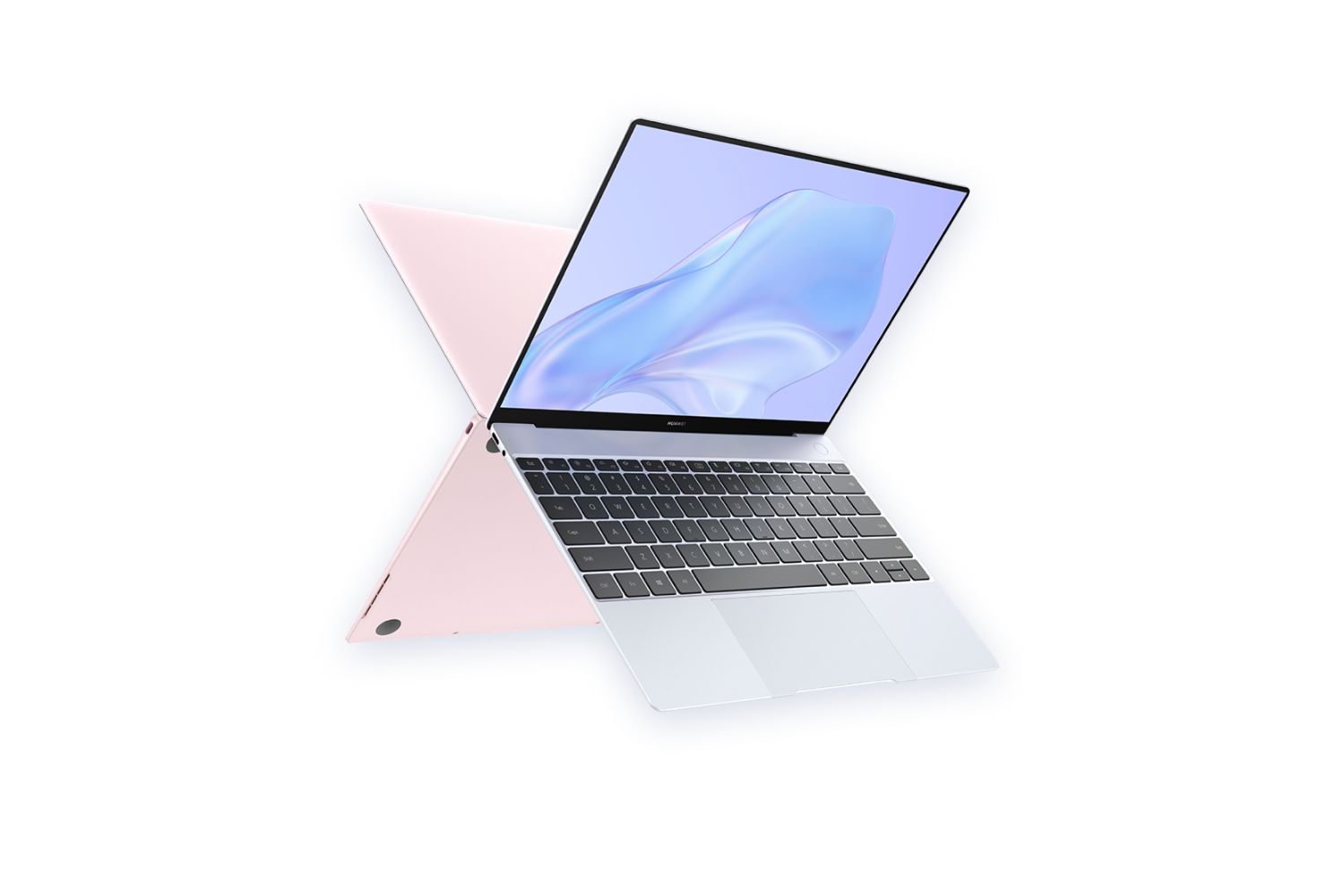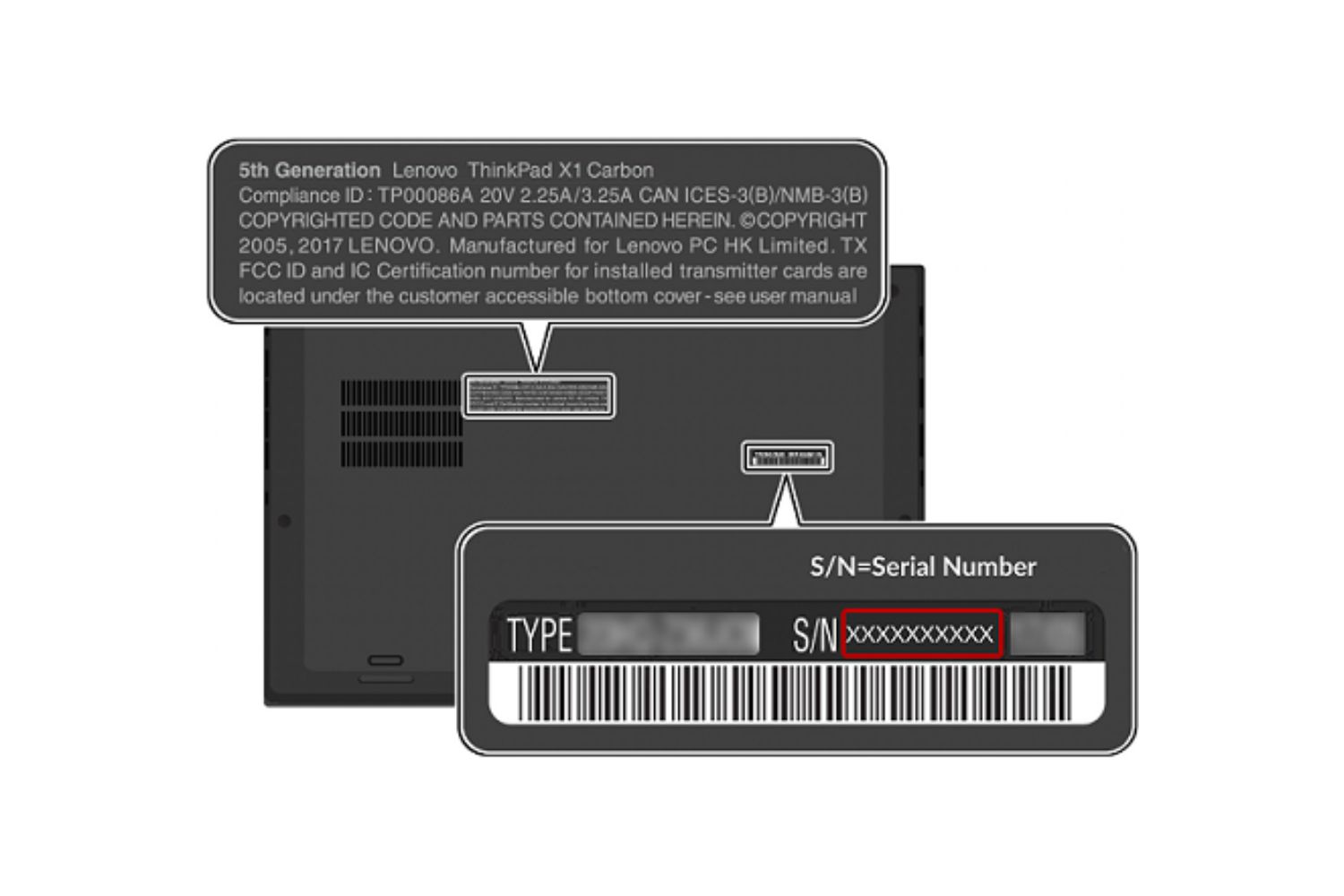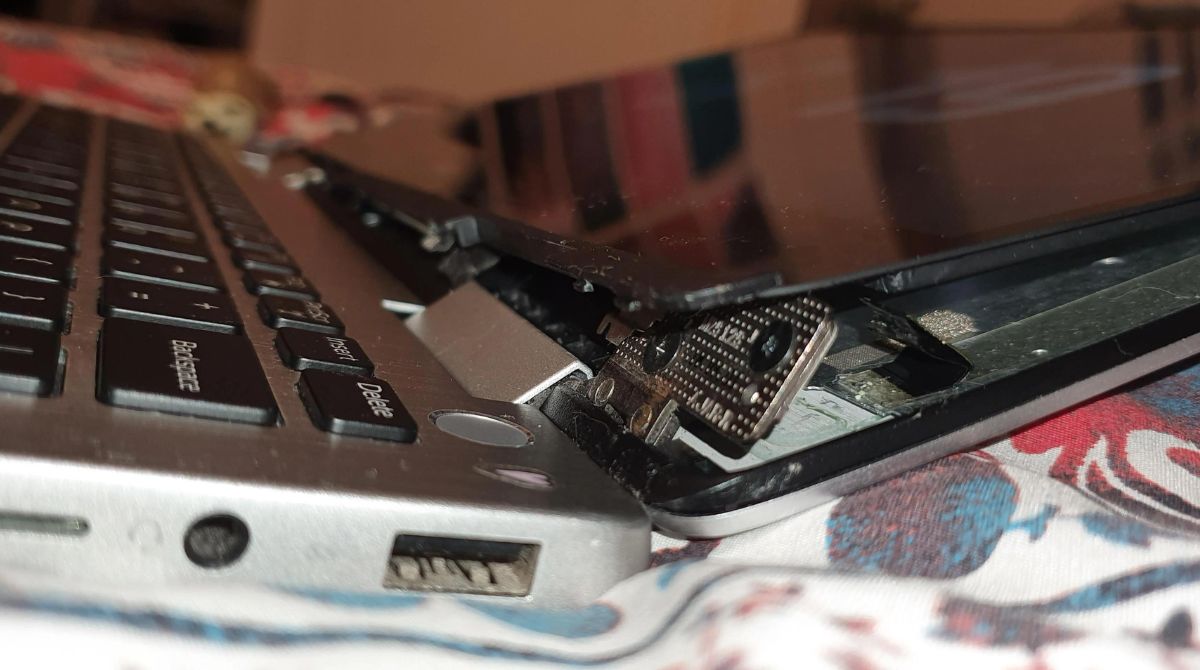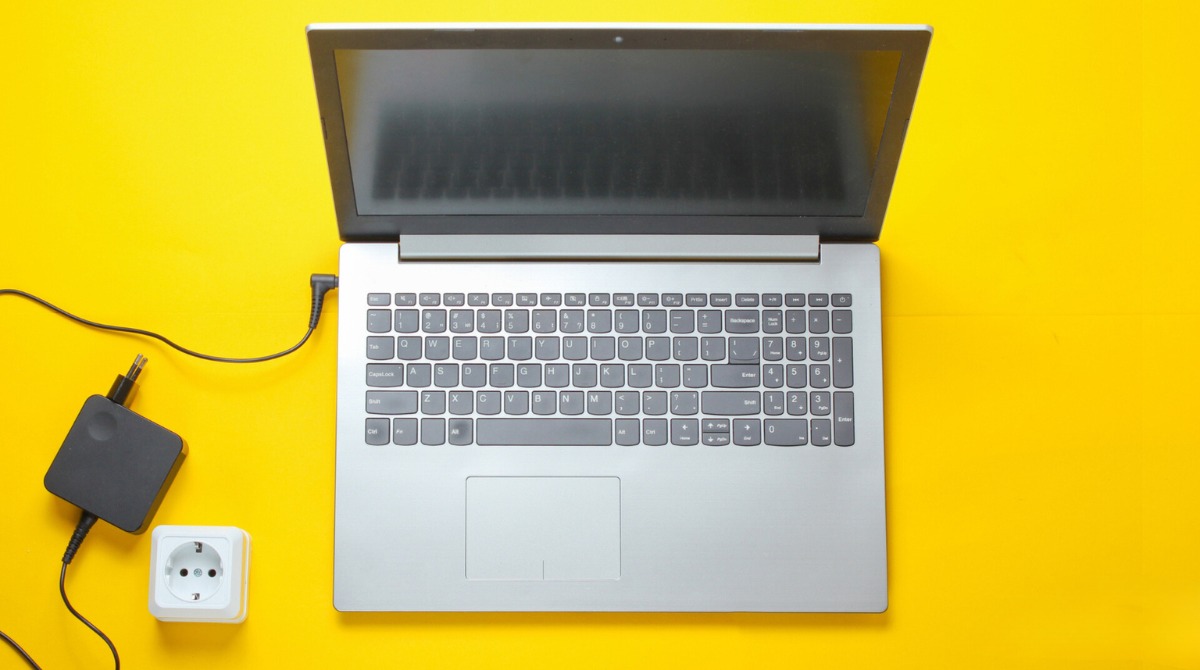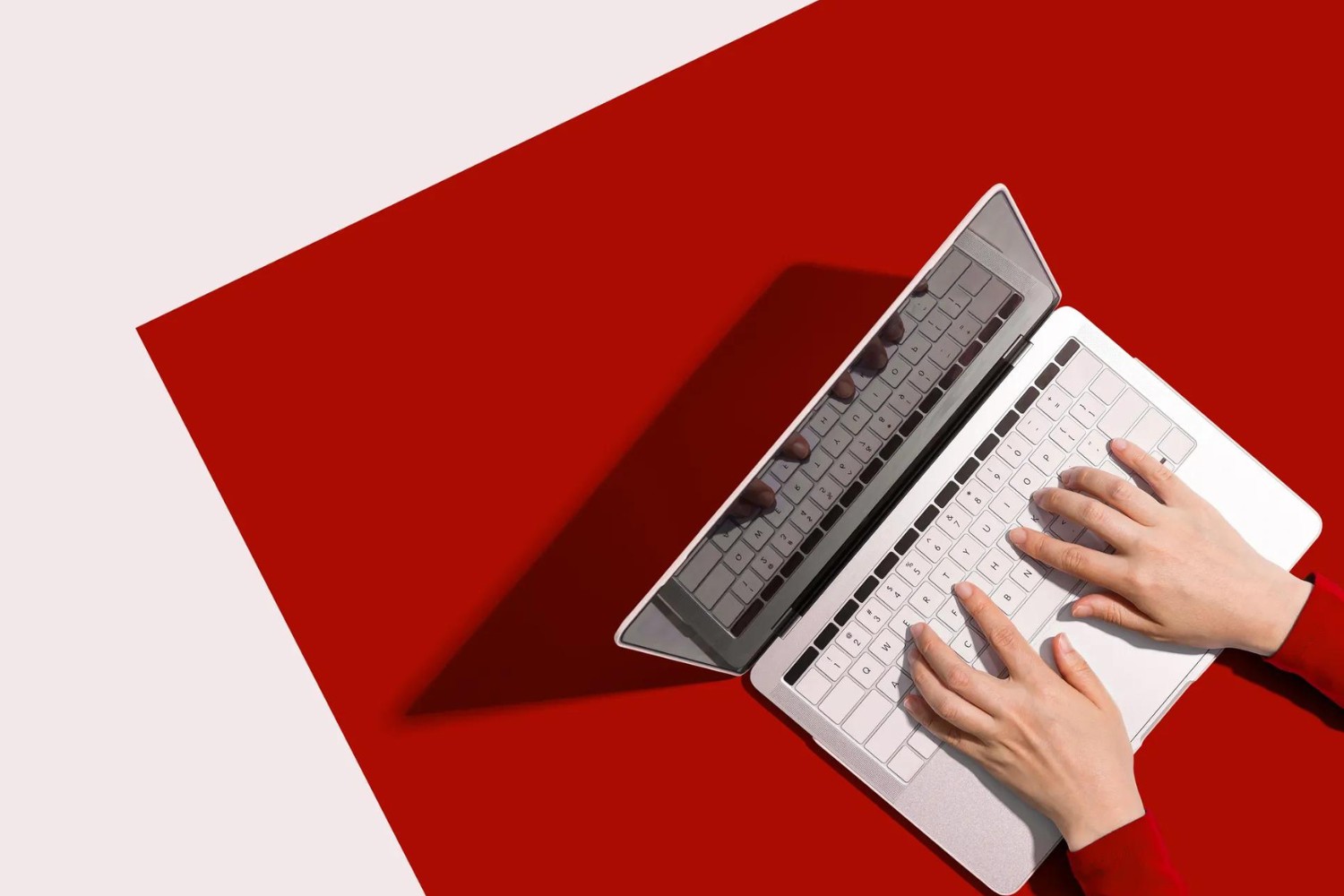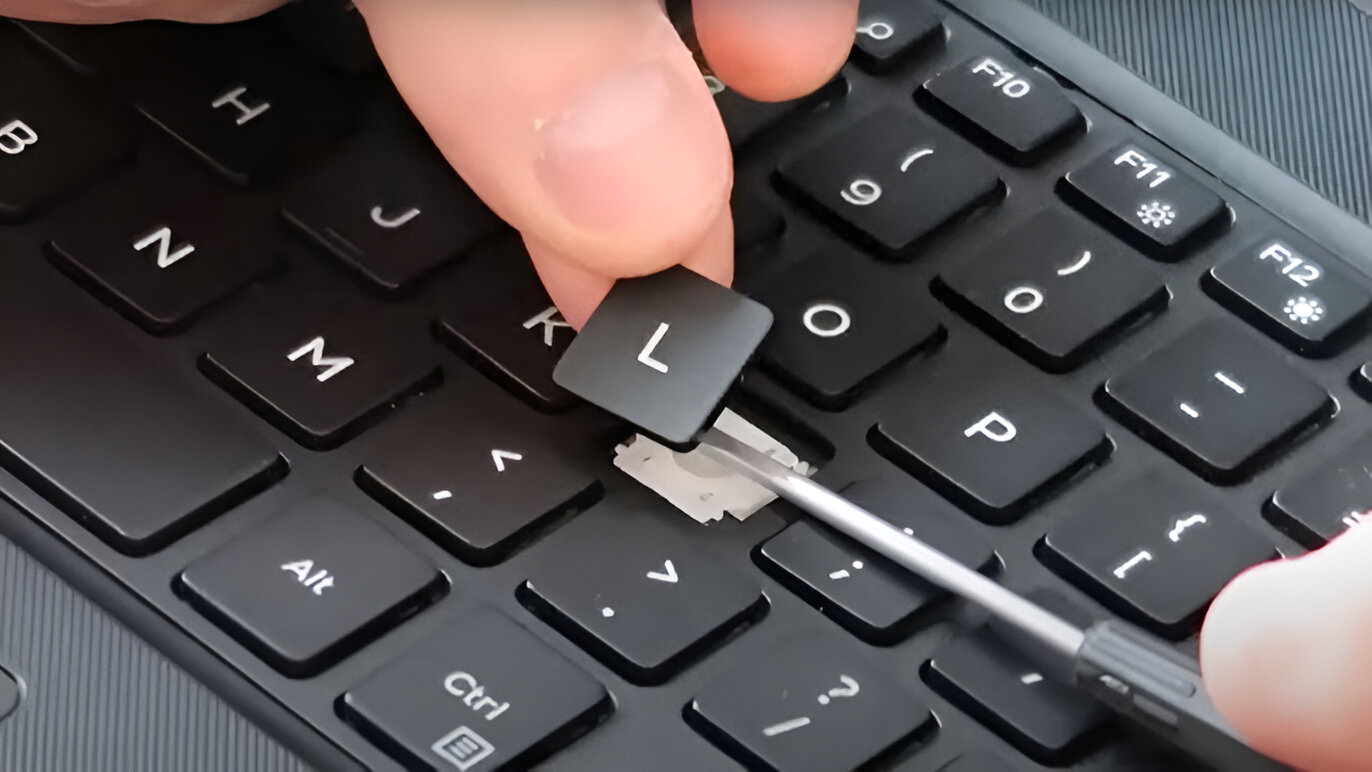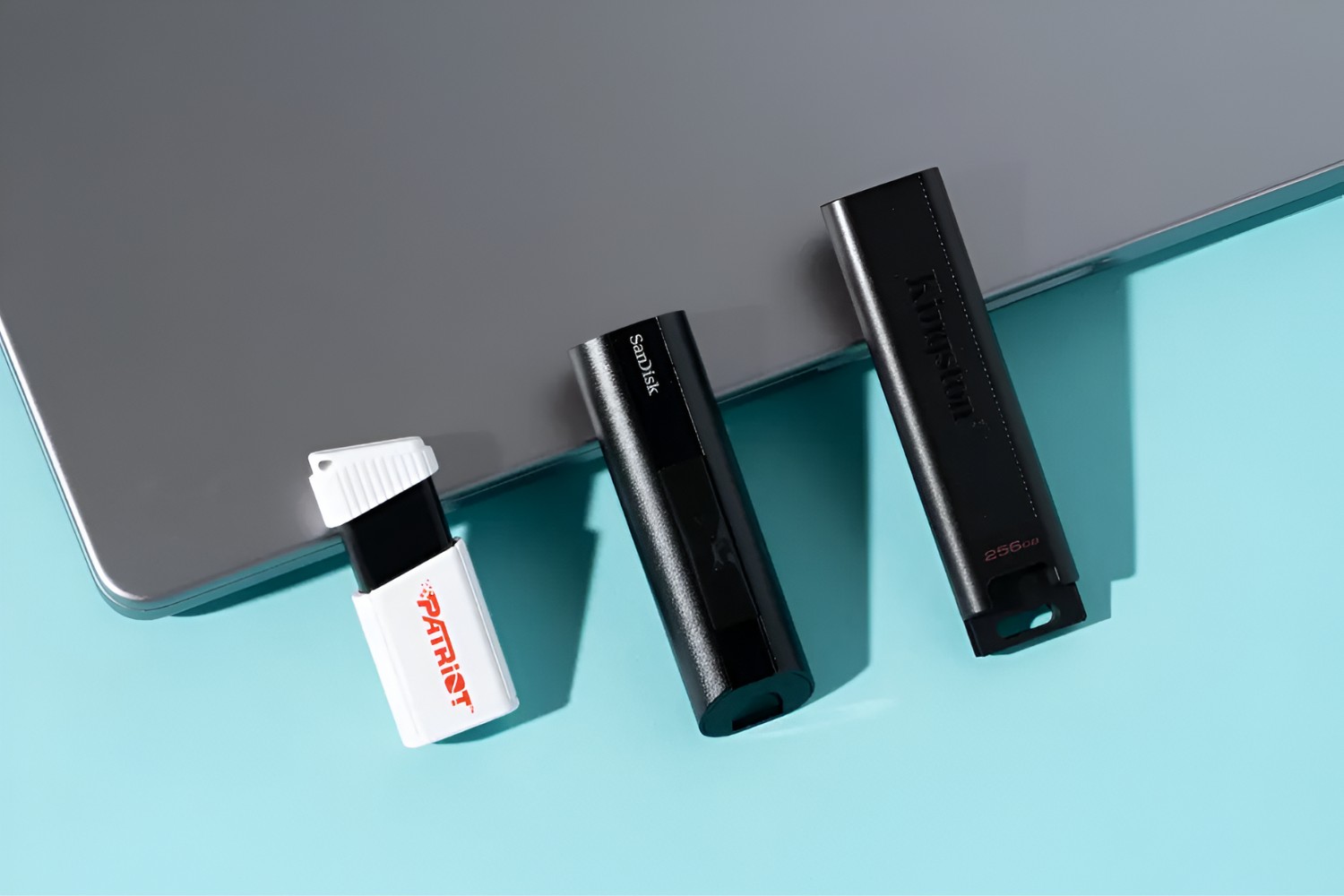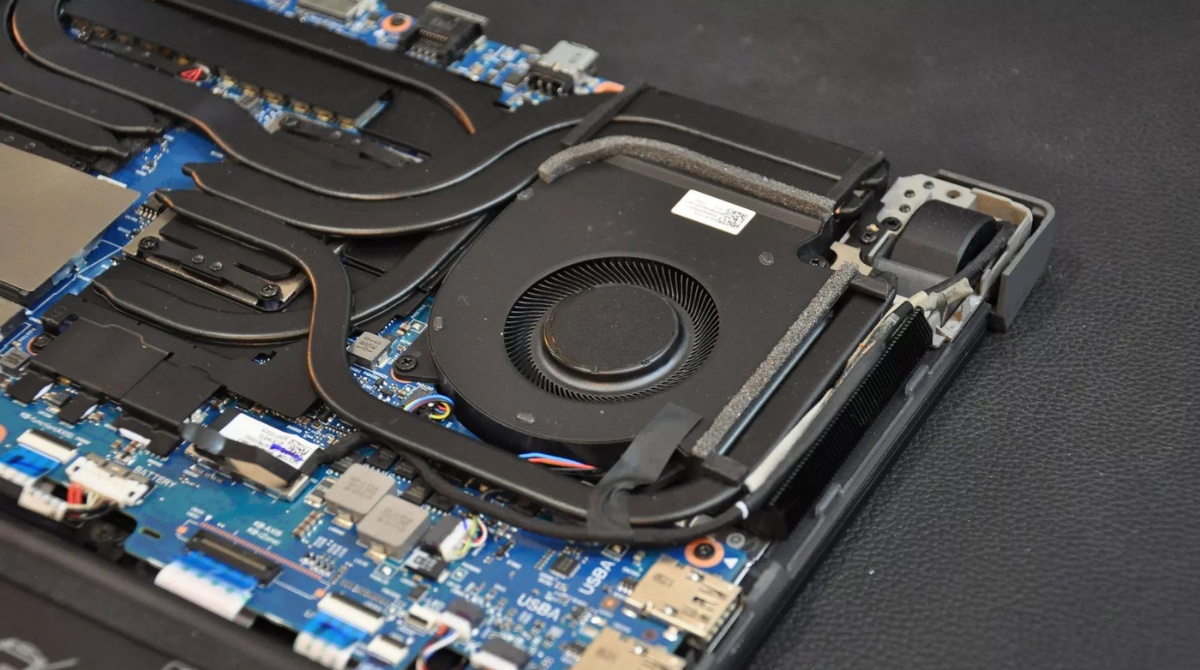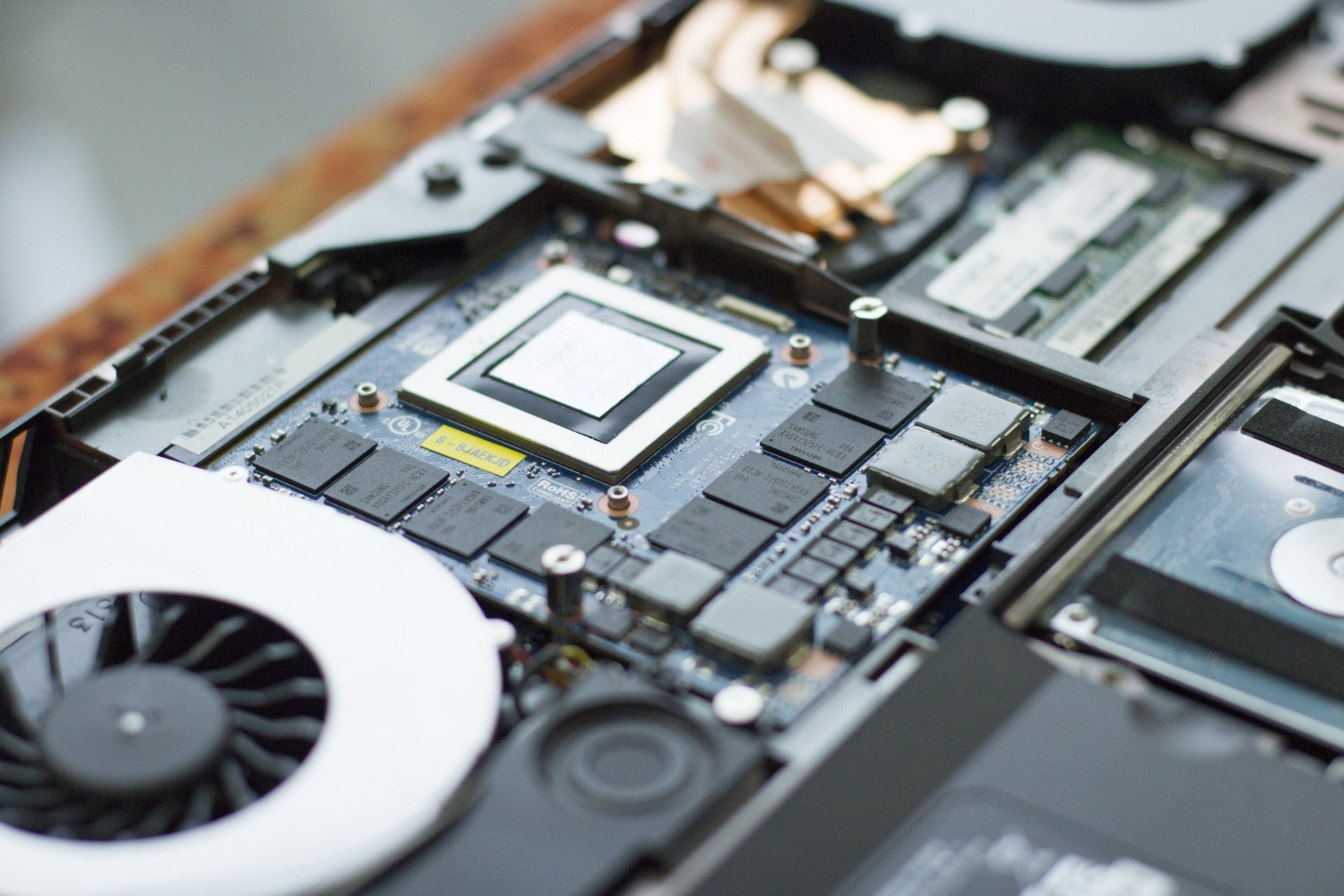Introduction
Welcome to the world of Ultrabooks! These sleek and powerful machines have become increasingly popular, offering a perfect balance of portability and performance. Whether you’re a student, professional, or just someone who loves the latest tech gadgets, owning an Ultrabook can greatly enhance your computing experience.
However, like any electronic device, Ultrabooks require regular maintenance to ensure optimal performance and longevity. In this article, we will explore some key tips on how to maintain your Ultrabook and keep it running at its best.
From cleaning up your Ultrabook and optimizing startup programs to managing your hard drive space and updating your operating system, we will cover the essential steps you need to take to maintain your Ultrabook’s performance. We will also delve into adjusting power settings, removing malware and viruses, and keeping your Ultrabook cool. By following these tips, you can enjoy a snappy and efficient computing experience for years to come.
So, whether you’re a seasoned Ultrabook user or new to the world of thin and light laptops, this article will provide you with valuable insights and actionable advice to keep your Ultrabook running smoothly. Let’s dive in and discover the secrets of maintaining your Ultrabook’s performance!
Clean Up Your Ultrabook Regularly
Regularly cleaning up your Ultrabook is essential for maintaining its performance. Over time, temporary files, cache, and other unnecessary data can accumulate and take up valuable storage space, leading to slower performance. Here are some steps you can take to keep your Ultrabook clean and clutter-free:
1. Delete Temporary Files: Start by removing temporary files from your Ultrabook. These files are created by various applications and can accumulate over time, causing your system to slow down. You can easily delete these files by using the Disk Cleanup utility in Windows or a third-party cleaning tool.
2. Clear Browser Cache: Your web browser stores data such as images, cookies, and browsing history, which can also accumulate and slow down your Ultrabook. Regularly clearing your browser cache can help improve performance. Simply go into your browser’s settings and find the option to clear browsing data.
3. Uninstall Unused Applications: Take a look at the applications and programs installed on your Ultrabook. If there are any that you no longer use, it’s a good idea to uninstall them. This will not only free up storage space but also reduce the strain on your system resources.
4. Organize Files and Folders: A cluttered desktop or disorganized files and folders can make it harder to find what you need and slow down your Ultrabook. Take some time to organize your files into relevant folders and declutter your desktop. This will not only make your Ultrabook look cleaner but also make it easier to navigate.
5. Manage Downloads: Keep an eye on your downloads folder and regularly delete files that you no longer need. Downloads can quickly accumulate and take up unnecessary space on your Ultrabook’s storage.
By incorporating these cleaning practices into your routine, you can keep your Ultrabook running smoothly and maximize its performance. A clean and organized system will not only improve speed and responsiveness but also enhance your overall computing experience.
Optimize Startup Programs
When you boot up your Ultrabook, it’s common for several programs to automatically start running in the background. While some of these programs are necessary for your system’s functioning, others may be unnecessary and can slow down the startup process. Optimizing your startup programs can help improve your Ultrabook’s boot time and overall performance. Here are some steps you can take:
1. Disable Unnecessary Startup Programs: Take a look at the list of programs that start automatically when you turn on your Ultrabook. Identify any programs that you rarely use or no longer need. To disable them, open the Task Manager by pressing Ctrl + Shift + Esc, go to the “Startup” tab, and disable the programs you want to remove from the startup process.
2. Prioritize Essential Programs: While it’s important to disable unnecessary startup programs, make sure you don’t disable any critical programs that are required for your Ultrabook’s proper functioning. Prioritize programs that you use regularly and that are essential for your workflow or productivity.
3. Use a Startup Manager Tool: If you find it difficult to manually manage your startup programs, you can use a startup manager tool to help streamline the process. These tools allow you to easily enable or disable startup programs and provide additional information about their impact on your system’s performance.
4. Regularly Review and Update Startup Programs: It’s a good practice to review your startup programs periodically. As you install and uninstall applications, new programs may get added to the startup list. By regularly reviewing and updating your startup programs, you can ensure that only the necessary ones are running at startup.
5. Consider Using Hibernate Mode: If you frequently put your Ultrabook into sleep mode instead of shutting it down, consider using Hibernate mode instead. Sleep mode keeps certain programs running in the background, which can consume system resources. Hibernate mode, on the other hand, saves your current state into the hard drive and shuts down your Ultrabook completely. This allows for a cleaner startup when you turn it back on.
By optimizing your startup programs, you can significantly improve the boot time of your Ultrabook and ensure that your system starts up faster and runs more efficiently. It’s a simple yet effective step to enhance your overall computing experience.
Manage Your Hard Drive Space
Running out of hard drive space can not only slow down your Ultrabook but also affect its performance and overall responsiveness. Managing your hard drive space is crucial for ensuring that your system runs smoothly. Here are some tips to help you effectively manage your hard drive space:
1. Delete Unnecessary Files: Regularly go through your files and folders and delete any unnecessary files. This includes old documents, downloads, and media files that you no longer need. Be cautious when deleting files, as some may be important for your work or personal use. Consider using tools like Disk Cleanup or third-party cleaning software to help identify and delete large or unnecessary files.
2. Utilize Cloud Storage: If you are running low on hard drive space, consider utilizing cloud storage services for storing and accessing your files. Cloud storage allows you to free up space on your Ultrabook by storing files online, while still being able to access them whenever you need them.
3. Use External Storage Devices: Another option is to use external storage devices like USB flash drives or external hard drives to store large files or backups. This can help not only free up space on your Ultrabook but also provide a backup solution for your important files and documents.
4. Move Media Files: Media files such as videos, music, and photos tend to take up a significant amount of storage space. Consider moving these files to external storage devices or cloud storage, while keeping a limited selection on your Ultrabook for immediate access.
5. Uninstall Unused Programs: Take a look at the programs installed on your Ultrabook and uninstall any that are no longer needed or rarely used. This will help free up space on your hard drive and remove unnecessary files associated with these programs.
6. Compress Files and Folders: Consider compressing large files and folders to save space. This can be particularly useful for files that you don’t need to access frequently but still want to keep on your Ultrabook. Compressed files take up less space and can be easily extracted when needed.
By managing your hard drive space effectively, you can ensure that your Ultrabook has enough room to operate smoothly. A well-organized and spacious hard drive not only improves performance but also allows for future installations and updates without any hassle.
Update Your Operating System and Drivers
Keeping your operating system and drivers up to date is crucial for maintaining the performance and security of your Ultrabook. Regular updates provide bug fixes, performance improvements, and security patches that help optimize your system. Here’s why and how to update your operating system and drivers:
1. Performance Optimization: Operating system updates often include performance improvements and optimizations that can enhance the overall speed and efficiency of your Ultrabook. Updated drivers, on the other hand, ensure that your hardware components work seamlessly with the operating system, maximizing their performance.
2. Bug Fixes and Stability: Software bugs can cause crashes, freezes, or other performance issues. By updating your operating system and drivers, you can benefit from bug fixes and stability enhancements, providing a smoother and more reliable computing experience.
3. Security Enhancements: Keeping your operating system and drivers up to date is crucial for protecting your Ultrabook from vulnerabilities and security threats. Updates often include security patches that address known risks and protect your system from malware, viruses, and other online threats.
4. Automatic Updates: Most operating systems have a built-in automatic update feature that ensures you receive the latest updates without manual intervention. Enable this feature to streamline the update process and ensure that you stay up to date with the latest enhancements and security fixes.
5. Manual Updates: In some cases, you may need to manually check for updates. Go to the settings or control panel of your operating system to find the update section. From there, you can check for available updates and install them as needed. Additionally, you can also visit the manufacturer’s website to download and install the latest drivers for your Ultrabook.
6. Backup Your Data: Before updating your operating system or drivers, it’s a good practice to back up your important data. While updates are generally safe, unforeseen issues can sometimes occur. Having a backup ensures that you can restore your system in case anything goes wrong during the update process.
By regularly updating your operating system and drivers, you ensure that your Ultrabook remains optimized, secure, and reliable. It’s an essential step in maintaining your system’s performance and protecting your data from potential threats.
Keep Your Software and Apps Updated
Updating your software and apps is essential for maintaining the performance, security, and compatibility of your Ultrabook. Developers regularly release updates that address bugs, introduce new features, and enhance stability. Here’s why and how to keep your software and apps updated:
1. Performance and Stability: Updating your software and apps ensures that you have the latest version, which often includes performance optimizations and bug fixes. These updates can improve the overall speed and stability of your Ultrabook, providing a smoother and more efficient user experience.
2. Security Improvements: Outdated software and apps can pose security risks, as they may contain vulnerabilities that hackers can exploit. By updating to the latest versions, you benefit from security patches that protect your Ultrabook from potential threats, such as malware, viruses, and other cyberattacks.
3. Compatibility with Operating System: As your operating system undergoes updates, it’s essential to ensure that your software and apps remain compatible. Developers frequently release updates to ensure their products work seamlessly with newer operating system versions. Failure to update your software and apps may result in compatibility issues and diminished performance.
4. Automatic Updates: Many software and apps have built-in automatic update features. Enable this feature to streamline the update process and ensure that you receive the latest updates without manual intervention. Automatic updates help keep your Ultrabook up to date with the latest features, performance improvements, and security enhancements.
5. Manual Updates: In some cases, you may need to manually check for updates. Most software and apps have a “Check for Updates” option within their settings or menus. Take the time to check for updates regularly and install them as needed. Additionally, you can also visit the developer’s website to download and install the latest version if automatic updates are not available.
6. App Store Updates: If you utilize app stores such as the Microsoft Store or Apple App Store, regularly check for updates within the store’s update section. These app stores provide a centralized location to manage and update your installed apps, making it convenient to keep everything up to date.
By keeping your software and apps updated, you ensure that your Ultrabook operates at its best, offers optimal security, and remains compatible with the latest operating system features. Take the time to check for updates regularly and enable automatic updates whenever possible to enjoy a seamless and secure computing experience.
Disable Unnecessary Visual Effects
Visual effects and animations can make your Ultrabook’s interface more visually appealing, but they can also consume system resources and potentially slow down performance. Disabling unnecessary visual effects can help optimize the performance of your Ultrabook. Here are some steps you can take:
1. Adjust Desktop Visual Effects: Depending on your operating system, you can adjust the visual effects settings to reduce the graphical workload on your Ultrabook. Windows, for example, provides options to adjust visual effects through the Control Panel or System Settings. Disable or minimize visual effects such as window animations, transparency, and shadows to lighten the load on your system’s resources.
2. Disable Startup Animations: Startup animations can add a stylish touch to your Ultrabook’s boot-up process, but they can also delay the startup time. Consider disabling startup animations to speed up the boot process. Check the settings in your operating system or BIOS to disable any unnecessary or lengthy animations during startup.
3. Limit Background Animations: Some apps and websites feature background animations that can be visually appealing but can also drain system resources. Consider disabling or limiting such animations in your apps or browser settings. This will not only improve performance but also reduce battery consumption on your Ultrabook.
4. Optimize Visual Effects for Performance: Many operating systems offer a performance mode option that optimizes visual effects for better performance. Enable this mode to prioritize speed over aesthetics. This setting can be found in your operating system’s Control Panel or System Settings.
5. Disable Animated Wallpapers: Animated wallpapers, although visually engaging, can hog system resources and impact performance. Opt for static wallpapers instead, which are less demanding on your Ultrabook’s resources. Set a high-quality static image as your wallpaper to maintain a visually pleasing desktop without compromising performance.
6. Minimize or Disable System Sounds: System sounds, such as button clicks and error beeps, can also impact performance, especially when multiple processes require audio output. Consider minimizing or disabling system sounds to reduce the overall processing workload on your Ultrabook.
By disabling unnecessary visual effects, you can optimize the performance of your Ultrabook. This will result in smoother operation, faster response times, and an overall more efficient computing experience. Experiment with these settings to find the right balance between aesthetics and system performance.
Adjust Power Settings
One of the key factors that can affect the performance and battery life of your Ultrabook is the power settings. Adjusting the power settings according to your needs and usage patterns can help optimize the performance and extend the battery life of your device. Here are some steps you can take to adjust the power settings:
1. Power Plans: Most operating systems offer different power plans that allow you to customize the power settings to suit your requirements. These plans include options such as Balanced, Power Saver, and High Performance. Choose a power plan that aligns with your needs, considering factors like performance, battery life, and power consumption.
2. Processor Power Management: Within your power settings, you can often find options to manage your processor’s power. Adjusting the processor power management settings can help balance the performance and energy efficiency of your Ultrabook. You can set the maximum processor speed, configure the system cooling policy, and adjust the minimum processor state based on your preferences.
3. Display Brightness: The display brightness level significantly impacts both the battery life and overall power consumption of your Ultrabook. Lowering the display brightness when you’re in a well-lit environment or when you don’t need a high level of brightness can help conserve battery power. Adjust the brightness level to a comfortable setting that still allows for clear viewing.
4. Sleep and Hibernate Settings: Customize the sleep and hibernate settings for your Ultrabook to conserve battery power when your device is not in use. Set shorter sleep durations and consider hibernating your Ultrabook after a specified period of inactivity. This ensures that your system saves power whenever it’s idle for an extended period.
5. Wi-Fi and Bluetooth: If you’re not actively using wireless connectivity features like Wi-Fi and Bluetooth, consider disabling them. These features consume power even when not in use. Disabling them when they’re not needed can help extend battery life and reduce power consumption.
6. Background Apps: Take a look at the apps running in the background and adjust their power settings. Some apps may have settings to minimize power consumption, such as reducing background activity or syncing intervals. Configure these settings to strike a balance between functionality and power efficiency.
By adjusting the power settings according to your usage patterns and preferences, you can optimize both the performance and battery life of your Ultrabook. Take the time to explore the available power settings and customize them based on your needs to ensure an optimal computing experience while maximizing battery efficiency.
Keep Your Ultrabook Cool
Ensuring that your Ultrabook doesn’t overheat is crucial for maintaining its performance and prolonging its lifespan. Overheating can cause system instability, slow down performance, and potentially damage internal components. Here are some tips to help you keep your Ultrabook cool:
1. Use a Cooling Pad: Invest in a cooling pad or laptop cooler that helps dissipate heat from your Ultrabook. These cooling accessories typically have built-in fans that improve airflow and prevent the accumulation of heat around your laptop. Place your Ultrabook on a cooling pad when using it for an extended period or when performing resource-intensive tasks.
2. Elevate Your Ultrabook: Elevating your Ultrabook, even slightly, can help improve ventilation and heat dissipation. Consider using a laptop stand or propping up your device with a book or stand to create a gap between the laptop and the surface it’s resting on. This allows for better airflow and helps prevent heat buildup.
3. Keep Air Vents Clear: Ensure that the air vents on your Ultrabook are clear of obstructions. Dust, crumbs, and debris can accumulate around the vents, restricting airflow and causing the system to heat up. Regularly clean the vents using compressed air or a soft brush to remove any blockages.
4. Avoid Using on Soft Surfaces: Using your Ultrabook directly on soft surfaces like beds, cushions, or sofas can obstruct the airflow and cause excessive heat buildup. Opt for a hard and flat surface, such as a desk or lap desk, that allows for proper ventilation and prevents your Ultrabook from overheating.
5. Monitor and Control Fan Speed: Some Ultrabooks allow you to monitor and control fan speed manually. Check if your Ultrabook has a utility or software that enables you to adjust fan speed to ensure optimal cooling. Increase fan speed when performing resource-intensive tasks and lower it when usage is minimal to conserve power.
6. Limit Extreme Temperatures: Avoid exposing your Ultrabook to extreme temperature conditions. High ambient temperatures can exacerbate heat buildup within your device. Keep your Ultrabook in a cool, well-air-conditioned environment, and avoid leaving it in direct sunlight or in a hot car.
By taking these measures to keep your Ultrabook cool, you can protect its internal components, maintain optimal performance, and ensure a longer lifespan for your device. Regularly monitor your Ultrabook’s temperature and address any overheating issues promptly to avoid long-term damage. Keep in mind that different Ultrabook models may have specific cooling requirements, so refer to your device’s user manual for additional recommendations.
Remove Malware and Viruses
Malware and viruses pose a significant threat to the performance and security of your Ultrabook. They can slow down your system, steal sensitive information, or even render your device unusable. It’s important to regularly scan for and remove malware and viruses to keep your Ultrabook protected. Here’s what you can do:
1. Install and Update Antivirus Software: Start by installing a reputable antivirus software on your Ultrabook. This software will help detect and remove malware and viruses from your system. Keep your antivirus software up to date, as new threats emerge constantly and require the latest virus definitions to be effectively identified and eliminated.
2. Perform Regular System Scans: Set up regular system scans with your antivirus software to scan your Ultrabook for any potential threats. Schedule these scans at times when your device is typically idle, such as overnight or during periods of low usage. This allows the antivirus software to thoroughly examine your system for any malicious files or programs.
3. Update Your Operating System and Software: Keeping your operating system and software up to date is crucial for staying protected against known vulnerabilities that malware and viruses can exploit. Enable automatic updates or regularly check for updates to ensure that you have the latest security patches and bug fixes installed.
4. Be Cautious of Phishing Attempts: Be vigilant when it comes to suspicious emails, links, or attachments. Phishing attempts often involve disguised malicious content that can infect your Ultrabook if clicked or opened. Avoid clicking on suspicious links or downloading files from untrusted sources. Trust your instincts and exercise caution when interacting with emails or online content.
5. Enable Firewall Protection: Enable the built-in firewall protection on your Ultrabook to help block unauthorized access and protect your system from inbound threats. The firewall acts as a barrier between your device and potential hackers, helping to keep your Ultrabook secure.
6. Be Mindful of Downloads and Online Activities: Be cautious when downloading files or apps from the internet. Stick to trusted sources and verify the legitimacy of downloads before proceeding. Additionally, avoid visiting suspicious or potentially harmful websites to minimize the risk of malware infections.
If you suspect that your Ultrabook is infected with malware or viruses despite taking preventive measures, use your antivirus software to perform a deep scan and remove any detected threats. In more severe cases, you may need to seek professional assistance or utilize specialized malware removal tools to thoroughly clean your system.
By regularly removing malware and viruses from your Ultrabook, you can maintain a secure and high-performing system, protecting your personal and sensitive information from potential threats.
Conclusion
Maintaining the performance of your Ultrabook is crucial for a seamless and efficient computing experience. By following the tips and strategies outlined in this article, you can ensure that your Ultrabook remains optimized, secure, and reliable.
Regularly cleaning up your Ultrabook, optimizing startup programs, managing hard drive space, and updating your operating system and drivers are essential steps to keep your Ultrabook running smoothly. Disabling unnecessary visual effects, adjusting power settings, and keeping your Ultrabook cool are additional measures that can enhance performance and prolong the lifespan of your device. Finally, removing malware and viruses is crucial for maintaining a secure environment for your Ultrabook.
Remember, always strive to strike a balance between performance optimization and personal preferences. Every Ultrabook user has unique needs and requirements. Customize the settings and adjustments according to your usage patterns and desired outcomes.
By incorporating these best practices into your routine and staying proactive about your Ultrabook’s maintenance, you can enjoy a fast, reliable, and secure experience for all your computing endeavors.







